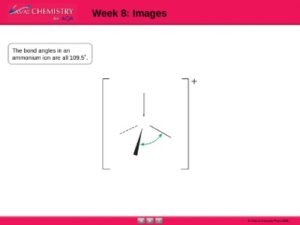
It ensures accurate financial records and helps in identifying discrepancies early on. In the realm of modern business, leveraging technology to optimize financial management has become an imperative. QuickBooks, a leading accounting software, stands as a crucial tool in this endeavor.

Gathering the bank statement and transactions is the initial step in reconciling a bank statement in QuickBooks, enabling the comprehensive matching of financial data with the official bank records. Reviewing transactions in QuickBooks Desktop is essential to identify any discrepancies and ensure that the recorded transactions correspond accurately with the bank statement. Entering the ending balance in QuickBooks Desktop is a critical step in the reconciliation process, ensuring that the financial records match the closing balance of the bank statement accurately. Reviewing transactions in QuickBooks Online is essential to identify any discrepancies and ensure that the recorded transactions correspond accurately with the bank statement. Entering the ending balance in QuickBooks Online is a crucial step in the reconciliation process, ensuring that the financial records align with the closing balance of the bank statement.
- Automated syncing is an excellent addition to QuickBooks and Wise.
- This final step is crucial for ensuring the accuracy and integrity of the financial data.
- By comparing the transactions recorded in QuickBooks with the actual bank statements, businesses can ensure that their financial records accurately reflect the true state of their accounts from previous months.
- You enter the balance of your real-life bank account for whatever day you choose.
How to Reconcile a Month in QuickBooks Online?
In the world of business, financial accuracy is the compass that guides decision-making. QuickBooks, with its intuitive account reconciliation feature, ensures that your financial data remains trustworthy. By diligently following the steps outlined in this guide, you’re not just reconciling accounts — you’re reconciling your financial aspirations with your financial reality. In doing so, you pave the way for a thriving and sustainable future for your business.
Enter the Ending Balance
By marking transactions as cleared, it becomes easier to track which ones have been verified by the bank, minimizing the risk of overlooking any discrepancies. This essential tool can be accessed by navigating to the ‘Accounting’ menu, followed by ‘Reconcile.’ Once in the reconcile module, users can select the appropriate account and statement date for reconciliation. The reconcile tool offers functionalities such as matching transactions, flagging discrepancies, and providing a clear overview of the financial alignment between the records and the bank statement.
You will then mark each transaction as cleared, either by ticking the boxes or by selecting Reconcile Now to clear all the transactions at once. Complete the reconciliation by clicking Reconcile Now to verify and finalize the process. It is crucial to ensure that all the transactions listed on the bank statement are accurately recorded in QuickBooks to maintain an accurate representation of the company’s financial status. By meticulously collecting and inputting this data, discrepancies can be identified and resolved promptly, preventing potential errors in financial reporting. This process is crucial for verifying the completeness and accuracy of financial transactions, and it plays a vital role in maintaining the integrity of the company’s financial records and reporting. Then, input the closing balance from the bank statement and bom meaning ensure that all transactions are accurately reflected.
Review the reconciliation adjustment
This signifies that all transactions have been examined and matched, providing a clear and accurate representation of the company’s financial position. Are you looking to master the art of reconciliation in QuickBooks? Whether you’re using QuickBooks Online or QuickBooks Desktop, understanding the process of reconciliation is crucial for ensuring the accuracy and integrity of your financial records. In this comprehensive guide, we’ll walk you through the step-by-step process of reconciling your accounts, including bank statements and balance sheet accounts. This crucial process begins with gathering the bank statements and transactions from the relevant accounts.
Use this guide anytime you need help doing or fixing a reconciliation. If you’re new to reconciliations or need more help, reach out to your accountant. This can get tricky and they know how to handle the next steps.Don’t have an accountant? To carry out a reconciliation, you will need to have your monthly bank or credit card statements on hand.
Once the data is collected, the next step is to compare the transactions recorded in QuickBooks with those listed in the bank statements, addressing any discrepancies. Adjustments may be necessary to rectify any inconsistencies and ensure that the financial records accurately reflect financial statements 101 the actual bank activity. This process is crucial for maintaining accurate financial records and ensuring that there are no discrepancies in the company’s books. It entails reviewing each transaction, comparing it with the corresponding bank statement entry, and making any necessary adjustments to ensure the accuracy of the records. It’s recommended to reconcile your checking, savings, and credit card accounts every month.
Understanding the Importance of Reconciliation
Just like balancing your checkbook, you need to regularly review your accounts in QuickBooks. You need to make sure the amounts match your real-life bank and travel agency accounting credit card statements. This process is called reconciling (or a reconciliation).

No comment